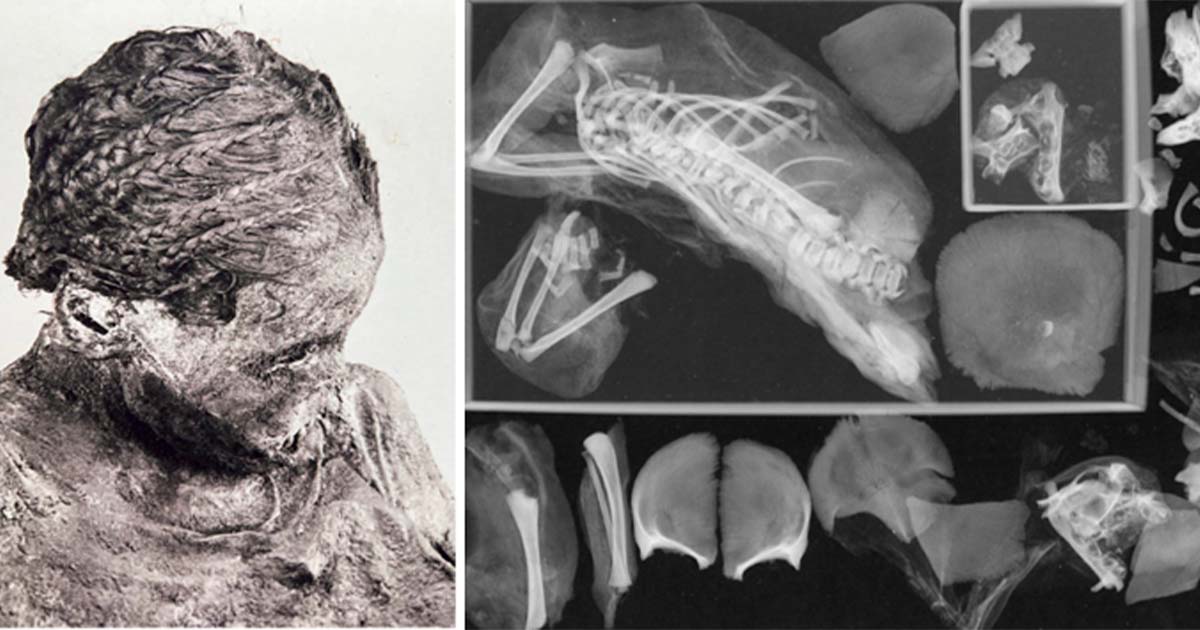Los arqueólogos han hecho un descubrimiento impactante después de un nuevo examen de una madre adolescente momificada que murió durante el parto.
Los arqueólogos han hecho un descubrimiento impactante después de volver a examinar los restos momificados de una madre adolescente de entre 14 y 17 años que murió al dar a luz hace más de 1.500 años.

Lo que hace que el hallazgo sea horripilante y extraordinario al mismo tiempo es que se encuentran un feto y una placenta en el área pélvica y otro en el pecho.
Los investigadores analizaron los restos momificados de una adolescente que murió durante el parto en el antiguo Egipto, revelando que la joven futura madre estaba en proceso de dar a luz gemelos cuando murió. Desafortunadamente, el parto dio un giro negativo cuando la cabeza del primer bebé quedó atascada en el canal del parto, lo que provocó la muerte tanto del bebé como de la madre.
In Egypt’s Kharga Oasis, the teen mom was discovered in 1908 at the El Bagawat cemetery. The researchers noted that she had been extensively layered with “a great quantity of salt,” an ancient Egyptian practice known for its desiccating properties that effectively dried out the entire body. The body was dated to the Late Dynasty in ancient Egyptian history, spanning from 404 to 343 BC.
Field notes from the time reveal that she was found with a fetus and placenta between her legs, leading to the conclusion that she had died from obstetric complications.
Using computed tomography (CT) scans of the body, the George Washington University team revisited the mummy after over a century to ascertain precisely what might have gone wrong. The scans revealed the presence of a second fetus within the woman’s chest cavity, indicating that she was carrying twins.
More startling revelations were to come when the researchers noted that the infant placed between the woman’s legs was missing its head. Upon closer examination, they realized that the baby’s head was still lodged in the mother’s pelvis, leading them to suspect that the fetus had become decapitated during the birthing process.
 (a) CT scan of mummy. Circle indicates fetal skull, ribs and long bones lodged in chest cavity. (b) The CT scans detected another fetus lodged in the mummy’s chest cavity, displaying long bones, ribs, neural arches, crania, and five hand bones.
(a) CT scan of mummy. Circle indicates fetal skull, ribs and long bones lodged in chest cavity. (b) The CT scans detected another fetus lodged in the mummy’s chest cavity, displaying long bones, ribs, neural arches, crania, and five hand bones.
The study authors describe this outcome as a case of “traumatic fetal decapitation,” a rare consequence of breech presentations, i.e., feet first during childbirth.
“This is a rare find,” Francine Margolis, one of the study authors, told McClatchy News. “There are several examples of women dying during childbirth in the archaeological record (one was a twin pregnancy). However, there has never been one found in Egypt.”
The second fetus discovered in the woman’s chest cavity raised some mystery.
According to the researchers, it’s possible that the embalmers were not aware of the twin pregnancy and forgot to remove the second fetus before mummification.
According to IFL Science, the unborn twin may have moved from the womb to the chest cavity as the mummy’s diaphragm dissolved.
“This examination of the mother and her children at birth reconfirms how dangerous pregnancy, labor, and delivery was, especially during this time period,” write the study authors.
The ancient Egyptians held a deep reverence for symbolism, balance, and order, and these beliefs extended to their views on procreation and childbirth.
A spell found on ancient papyrus, the Oracular Amuletic Decree, said, “We shall (cause her) to conceive male children and female children. We shall keep her safe from a Horus-birth, from an irregular birth and from giving birth to twins.”
Hechizos y encantamientos como este revelan una aversión cultural a los nacimientos de gemelos, buscando protección contra el “nacimiento irregular” y el nacimiento de gemelos. La trágica historia de esta joven madre y sus gemelos por nacer es un trágico recordatorio de las dificultades que enfrentaban las mujeres antiguas durante el parto.
El estudio, que incluye imágenes de la momia, se publica en el International Journal of Osteoarchaeology.





